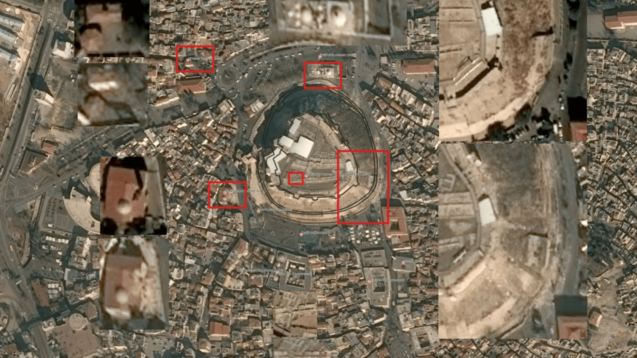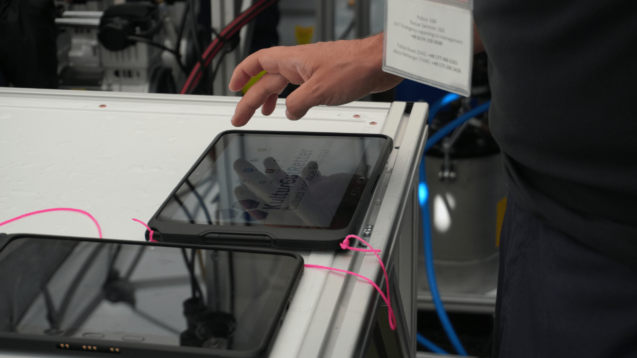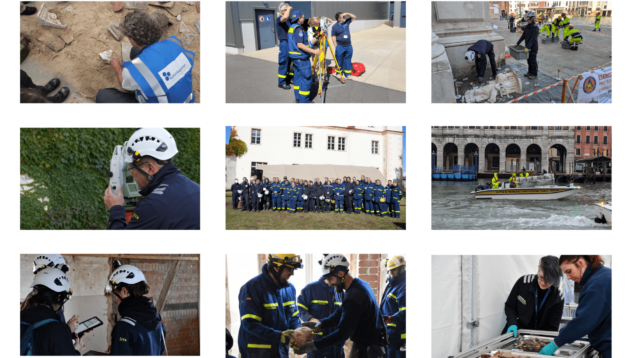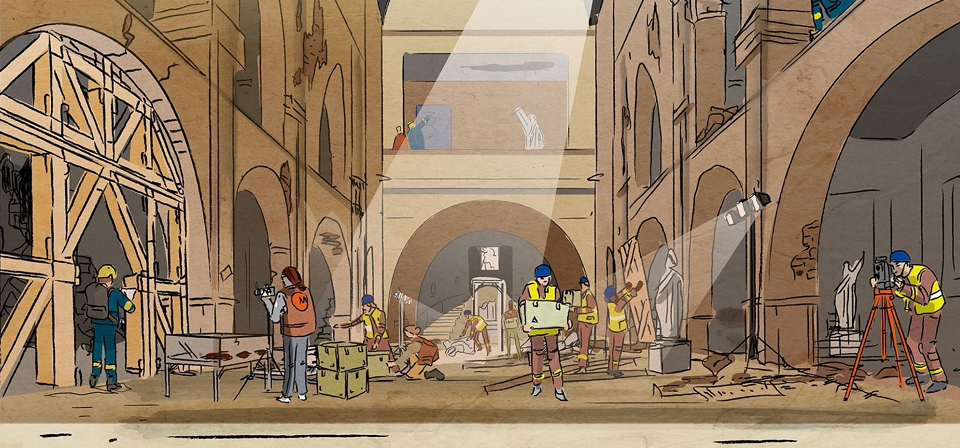
tasks and aims
When cultural heritage is at risk as a result of natural disasters, fires, emergencies or other crises, it’s essential to provide rapid and effective assistance. For this reason, the German Archaeological Institute (DAI), the Leibniz Center for Archaeology (LEIZA) and the German Federal Agency for Technical Relief (THW) have launched a project called KulturGutRetter so as to be able to contribute to the emergency safeguarding of museums, historical monuments, collections and archives in a crisis situation as part of international disaster reflief, through the deployment of the Cultural Heritage Response Unit (CHRU). Specialists in cultural heritage are developing equipment, software, minimum standard procedures (MSP) and training programmes that help the on-site personnel carry out the tasks of damage assessment, salvaging, and emergency conservation of movable and immovable cultural heritage.
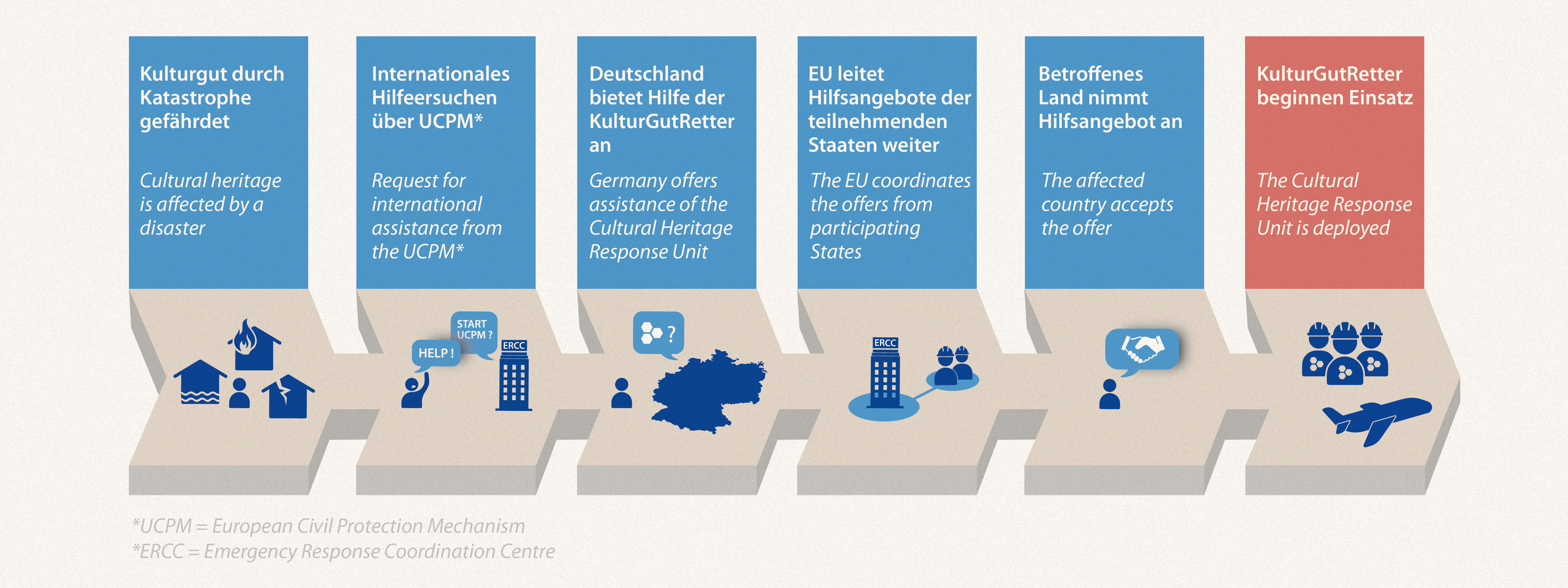
digital solutions
Even before the Cultural Heritage Response Unit flies out to the disaster area, remote sensing data, photographic material, maps, and other data are gathered. During deployment, KulturGutRetter specialists using digital apps record and process a great deal of data. To be able to document cultural heritage items and assess damage conveniently, KulturGutRetter experts at the IT department of the DAI are further developing the Open Source apps iDAI.field and QField.
Equipment, mobile lab and standard procedures
Protected monuments and other immovable cultural heritage items can be as much affected by a disaster as movable objects can. At the Division of Building Archaeology at the DAI’s Head Office, experts in building archaeology and heritage conservation are drawing up standard procedures when dealing with immovable cultural heritage. They include the documentation, protection, stabilisation, clearance, salvaging and storage of historical architectural monuments, their furnishings and amenities.
To carry out rapid initial conservation treatment on movable cultural heritage like statues, ceramics and archival material, experts from the KulturGutRetter project at the Leibniz Center for Archaeology (LEIZA) have been developing and trialling a light-weight, modular lab. The scalable system is designed to be transported as air cargo to the disaster area. In addition, the researchers are drawing up science-based minimum standard procedures and workflows.
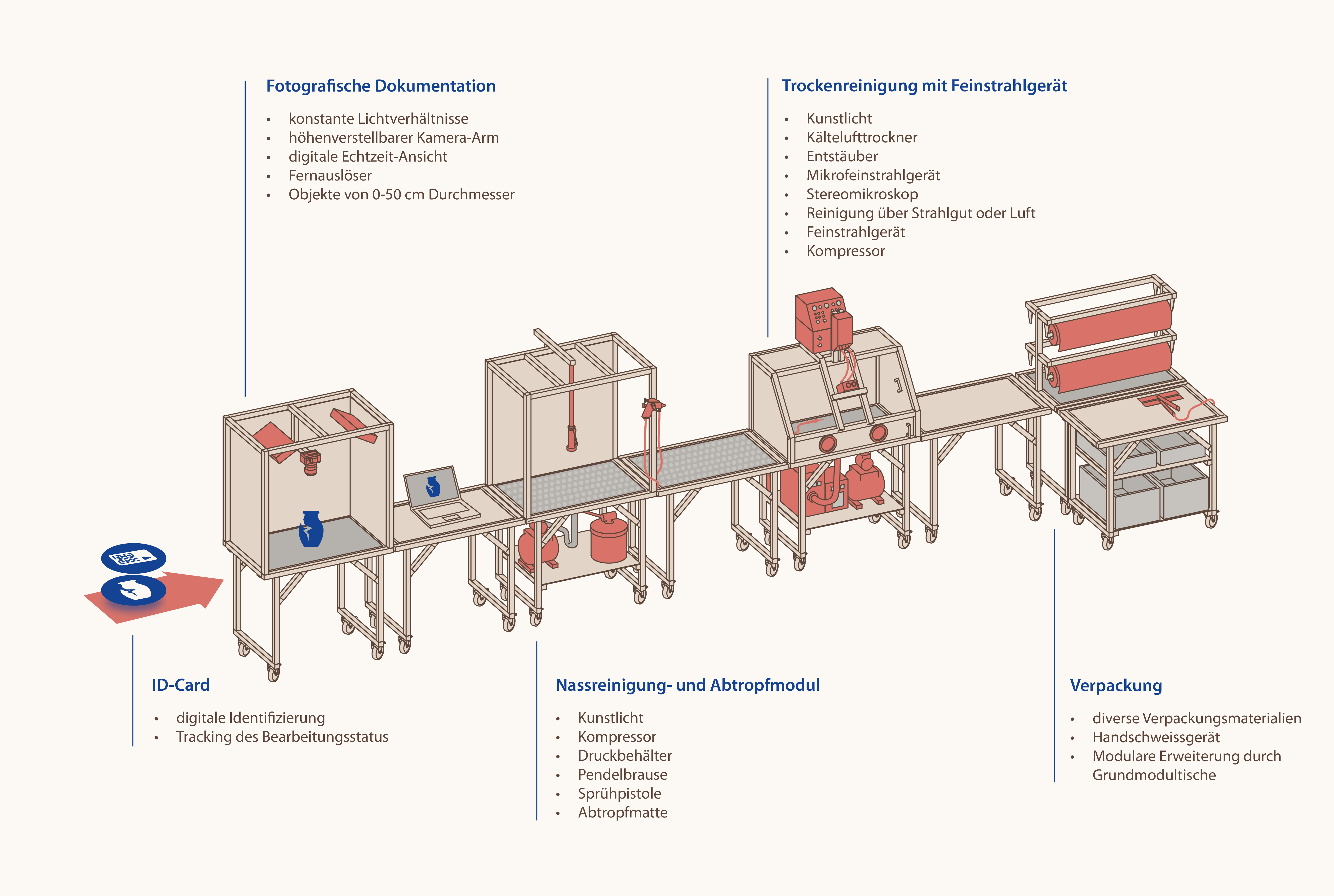
In the mobile lab, specialists can carry out the emergency treatment of objects serially at work stations for photographic documentation, dry and wet cleaning, and packaging. | Image: M. Pasternak, DAI.
Logistics and Infrastructure
Good planning and logistics for the deployment are essential if cultural heritage is to receive rapid and efficient conservation treatment during a crisis. Experts from the THW, together with the DAI and the LEIZA, are developing the respose mechanism
and drawing up plans for logistics, management, personnel and coordination. Operational logistics allow the rapid transport of professional and volunteer personnel and material to the area of deployment. The team is also responsible for getting infrastructure at the site up and running, for instance tents, electricity, lighting, internet and water. The equipment and devices used by KulturGutRetter teams, such as the mobile conservation lab, are designed for rapid transportation by the THW logistics.
The THW can draw on the experience gained by its existing units active abroad and on the support of its more than 80,000 volunteers.
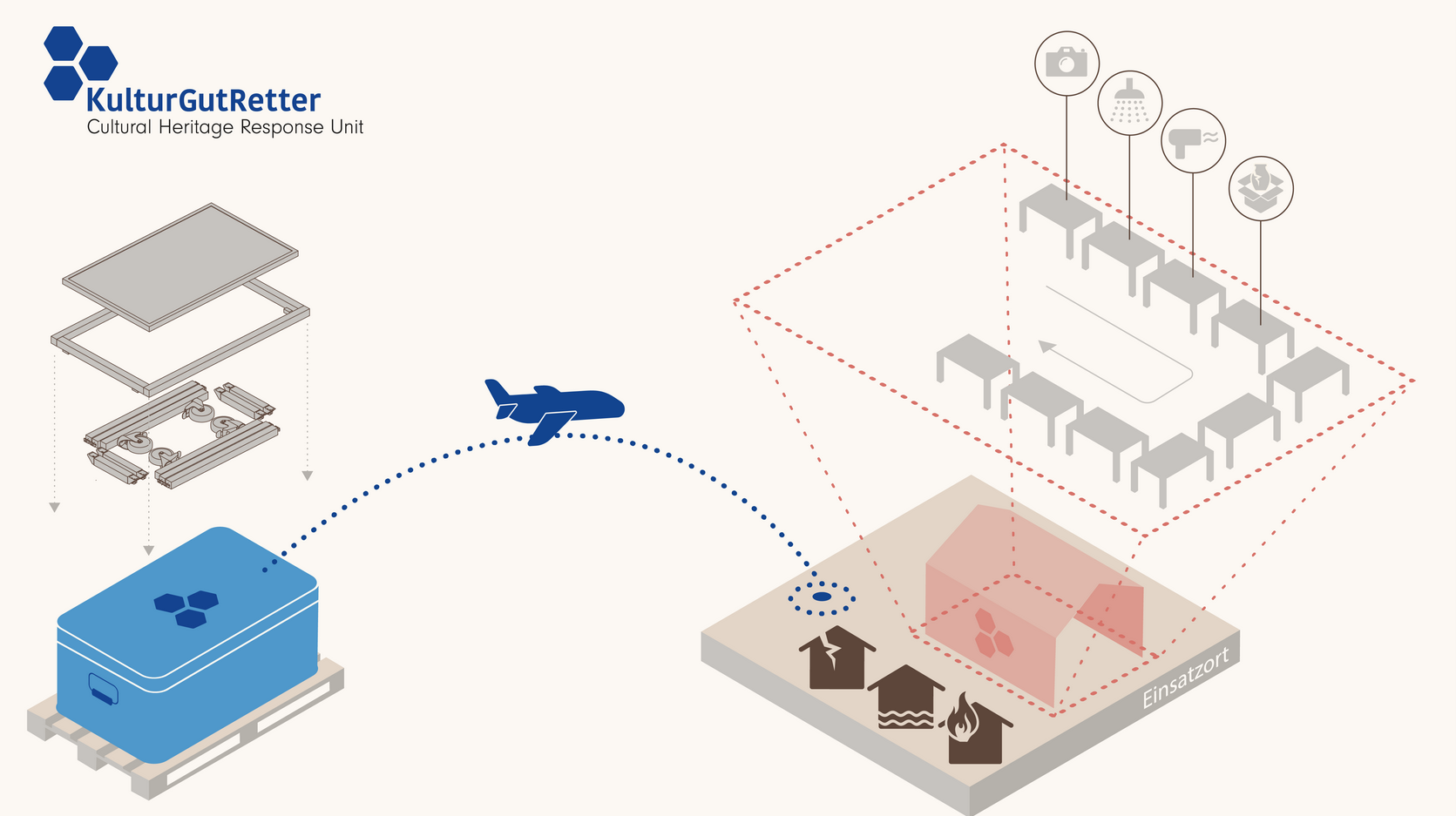
TEAM
Coordination:
Dr.-Ing. Katja Piesker (Scientific Director and Head of the Division of Building Archaeology at the DAI’s Head Office)
Team:
Christoph Rogalla von Bieberstein (project coordinator, DAI)
Dipl.-Ing. Tobias Busen (project coordinator, DAI)
Partners:
German Archaeological Institute (DAI)
Leibniz Center for Archaeology (LEIZA)
Federal Agency for Technical Relief (THW)
Supported by:
German Federal Foreign Office
Deutscher Bundestag
News
Remote Sensing for Archaeological and Cultural Heritage Sites at Risk
Natural hazards and anthropogenic land-use pressures are causing destructive events to occur with increasing frequency, causing severe damage to Archaeological and Cultural Heritage (ACH) sites. As part of the project KulturGutRetter, the Remote Sensing and Monitoring
IT infrastructure for cultural heritage response missions
The Cultural Heritage Response Unit (CHRU) is implementing a digital documentation system to document both the objects themselves and the measures carried out during response missions to protect cultural heritage. The unit is equipped with its
Looking back on 2024
As we look ahead to 2025 and plan for a new year of intensive project development – with the aim of reaching operational readiness and deployability – it is worth taking stock of what has been
